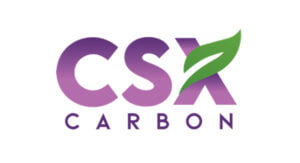By Cristian Bustos. Originally published at ValueWalk.

When it comes to carbon emissions, landowners can take matters into their own hands
Q4 2021 hedge fund letters, conferences and more
When Andy Howard teamed up with Sir Edward Millbank to found Climate Solutions Exchange (CSX Carbon) in January 2020, few could have imagined what the world would look like in just a few months. On the cusp of its second anniversary, we spoke with Andy who serves as CEO of CSX Carbon and asked him what the future holds for the CSX team and their plans to help develop a trusted carbon market and offer land managers a fair return for environmental management.
What was CSX launched to do and how would you assess progress to date?
We’re incredibly proud of our progress to date, and with a lot more remaining to be done the momentum of both our business and the need for innovative solutions to the Climate Emergency from the private sector is gathering pace. We began building CSX in January 2020, to help find a way for land managers to use technology to collect and analyse the necessary data to provide an accurate measurement of carbon sequestration, and provide to corporate carbon buyers an audit trail on that carbon that is genuine and meaningful. Our platform integrates data from satellites, drones and ground truthing for quantifying carbon, employing cutting-edge technology such as Drone RGB and LIDAR imaging, along with Terrestrial Laser Scanning, to provide landowners with a way of verifying their carbon sequestration success.
CSX is the first company in the UK to make this technology accessible, and helps its partners make decisions with certainty by providing a verifiable audit trail. Up until now, current satellite technology has been unable to provide accurate carbon calculations given it is both weather dependent and limited to resolutions of generally 10m and at best 25cm for the most expensive satellite derived data. In October, we received an initial £500,000 investment from Maughan Capital, which has been invaluable, and will help us to develop our LIDAR software. It’s been a great year for us and we think we’ll continue moving from strength to strength.
Why did you decide to launch CSX now?
The UK’s departure from the European Union has meant it no longer belongs to the EU’s Common Agricultural Policy. This has meant a big shift in the regulatory environment for sustainable farming practices including the upcoming introduction of the Environmental Land Management Scheme to incentivise sustainable farming practices. Because this new scheme rewards landowners who employ sustainable and environmentally friendly practices, we anticipate a demand for technologies like CSX which give landowners the ability to measure their own carbon footprint to improve their access to the benefits they deserve.
You recently spoke at the United Nations Climate Conference (COP26). How did you find the event?
It atmosphere made it feel like climate change is finally being recognised as the greatest threat facing mankind today, and that technology will be key to overcoming that threat. It was uplifting to see so many different kinds of innovation being talked about at the conference, which only emphasised to me the reality that our current approach to carbon offsetting – which came out of the Kyoto Protocol in 1997 – is no longer fit for purpose. The Kyoto Protocol was a good first step in encouraging businesses to address their emissions, but it was not designed for the level of demand nor for the level of accuracy the world needs in its fight against climate change.
Do you think your model will become more common across the industry as businesses realise their need to measure carbon accurately?
CSX technology is naturally positioned for scalability into a marketplace. In time, we are hoping to democratise the carbon trading market through affordable and accurate measurement, empowering businesses and landowners to track and improve their positive climate impact.
As we continue to incorporate and experiment with new technologies, we think that the opportunity for expansion is strong. Our focus is very much on the supply side of the market, rather than the demand side, which we think serves businesses better in the long run. Though we’re currently focused on the UK, we’re already receiving enquiries from territories around the world, and there’s no reason to suggest that we couldn’t expand to other markets in time, perhaps catalysing the adoption of our approach as a new international standard.
What do you make of the news from this week of the UN sounding climate change ‘alarm bells’ over the highest Arctic temperature on record?
Rising temperature levels in Siberia and the Arctic region are one of the many indicators that tell us we have to act now. It is incredible to think that a temperature of 38 degrees centigrade was recorded in Siberia, a figure which seems more befitting of the Mediterranean. News like this reminds us of the importance of cutting carbon emissions wherever possible and doing our utmost to work together to make our atmosphere cleaner and more sustainable to reverse these devastating effects.
What does 2022 have in store for CSX?
We think the future is very bright indeed, with our operational platform going live for land owners and managers in the middle of January 2022. Our BEAMS project on forestry with the University of Oxford & University of Gent will increase its activity rate, and we’re in discussion with a number of other leading scientific institutions about a similar stream of work for peatlands. This investment in scientific research driving updates to our existing models. We plan to expand our resources and capability within machine learning and AI development, building on our recent partnership with C4DI Northallerton. We hope that 2022 will bring more by way of innovation, investment and development in the ideas we’ve been working on, in order to start rapidly expanding our customer base.
Updated on
Sign up for ValueWalk’s free newsletter here.



